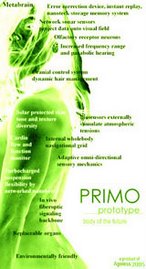Ask yourself:
What is the purpose of this website?
Who is my target audience?
How would they prefer to have the content presented to them?
How do I go about packaging the content to fulfil this preference?
The more research and planning you do, the easier it will be “to make informed decisions on technological or design issues; like choosing a suitable hosting package, for example”[1].
One of the informed decisions you might make is to use the div-element to efficiently structure your content blocks in terms of related meaning. This will assist your user in their navigation through the website- making your content easily accessible.
Once you have designed your HTML structure accordingly, it will be easy for you to simply “[add] the appropriate content in the appropriate divisions of the page”2. As a result, editing the content of your website (even once it has been posted) will also be conducted with the same ease.
A well structured HTML website is uncluttered and simple- each element is used “for its logical structural purpose”2.
In designing an efficient HTML structure, “[y]ou need to create a strong hierarchy for the site and breakdown content into small [logica] units”1.
You might want to consider including the following features in your HTML design structure:
- a heading with your logo and site name
- a main content page
- global site navigation
- subsection navigation
- a search form
- a utility area with shopping cart and check out
- a footer with legal stuff[2]
In terms of user navigation- it is important to practically and logically structure your content so that your users are able to quickly access the information they are searching for. Including context-based links that take the user to other pages on your website will also assist in the swift navigation of the website.
Internet users read web content differently to how they read printed text- “they tend to be more impatient”1 in their consumption of web textual content. Hence, we sometimes refer to them as browsers. As a result, you might want to consider an ‘overview' and 'details' structure to your website, “giving people a choice in how deep they want to delve”1.
Finally, consider 'future proofing' your website. In doing so, you are enabling your website to expand, without you having to rebuild it from the ground.
[1] http://www.getawebsite.friezedesign.co.uk/plan.htm
[2] http://www.wise-woman.org/tutorials/cssplanning/

No comments:
Post a Comment